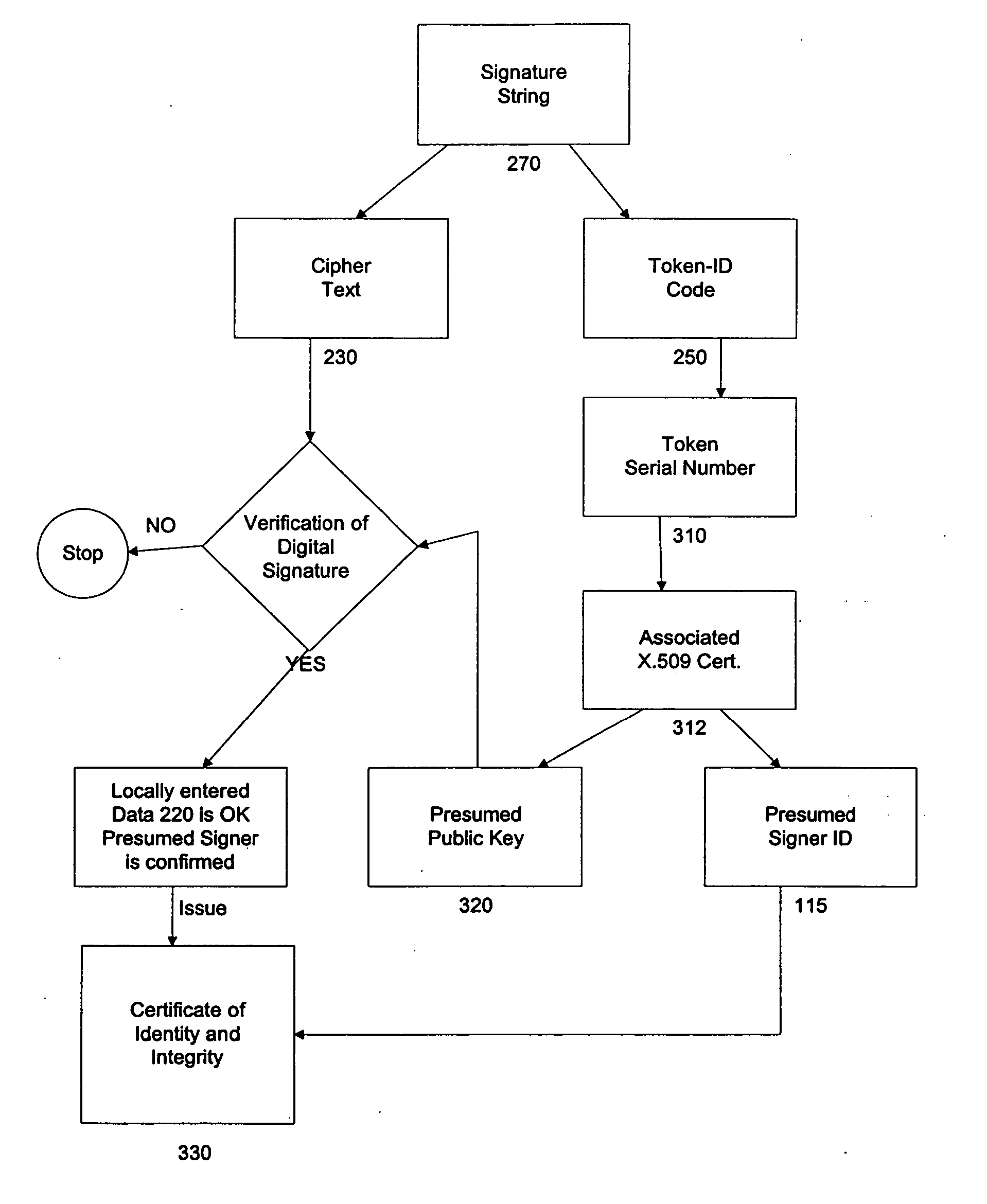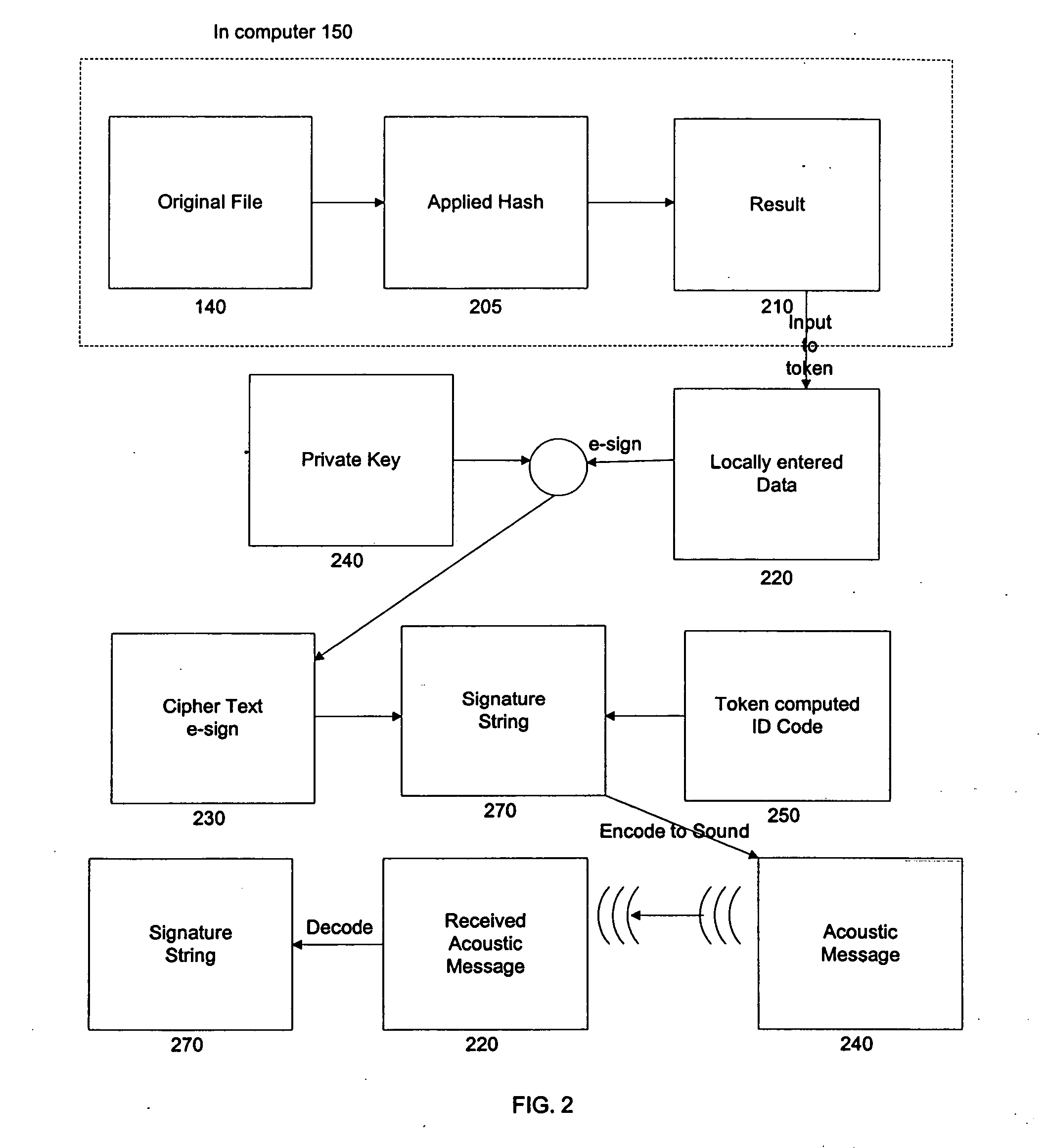Methods and device for digitally signing data
a digital signature and data technology, applied in the field of digital signatures of data, can solve the problems of limiting the user of digital signatures to one specific computer, affecting the widespread acceptance of digital signatures, and lack of portability
- Summary
- Abstract
- Description
- Claims
- Application Information
AI Technical Summary
Benefits of technology
Problems solved by technology
Method used
Image
Examples
Embodiment Construction
[0031] The present invention may be described herein in terms of functional block components and processing steps. It should be appreciated that such functional blocks may be realized by any number of hardware or software components configured to perform the specified functions. For example, the present invention may employ various software components, e.g., logic elements, database tables, look-up tables, and the like, which may be used to carry out a variety of functions under the control of one or more microprocessors or other control devices. In addition, those skilled in the art will appreciate that the present invention may be realized in a software or computer program context in conjunction with any number of conventional computer system environments. Furthermore, the present invention is not limited to the process flows described herein, as any process flow or rearrangement of process steps which captures the features of the present invention is considered to be within the s...
PUM
 Login to View More
Login to View More Abstract
Description
Claims
Application Information
 Login to View More
Login to View More - R&D
- Intellectual Property
- Life Sciences
- Materials
- Tech Scout
- Unparalleled Data Quality
- Higher Quality Content
- 60% Fewer Hallucinations
Browse by: Latest US Patents, China's latest patents, Technical Efficacy Thesaurus, Application Domain, Technology Topic, Popular Technical Reports.
© 2025 PatSnap. All rights reserved.Legal|Privacy policy|Modern Slavery Act Transparency Statement|Sitemap|About US| Contact US: help@patsnap.com



